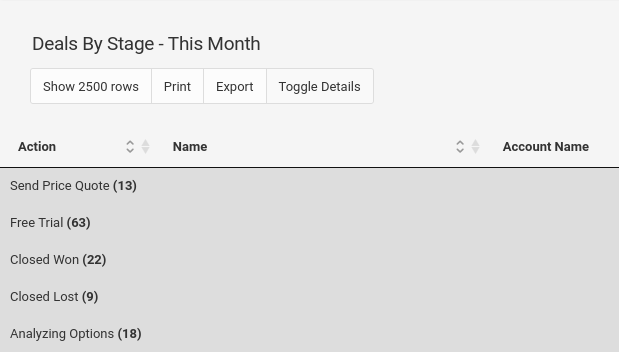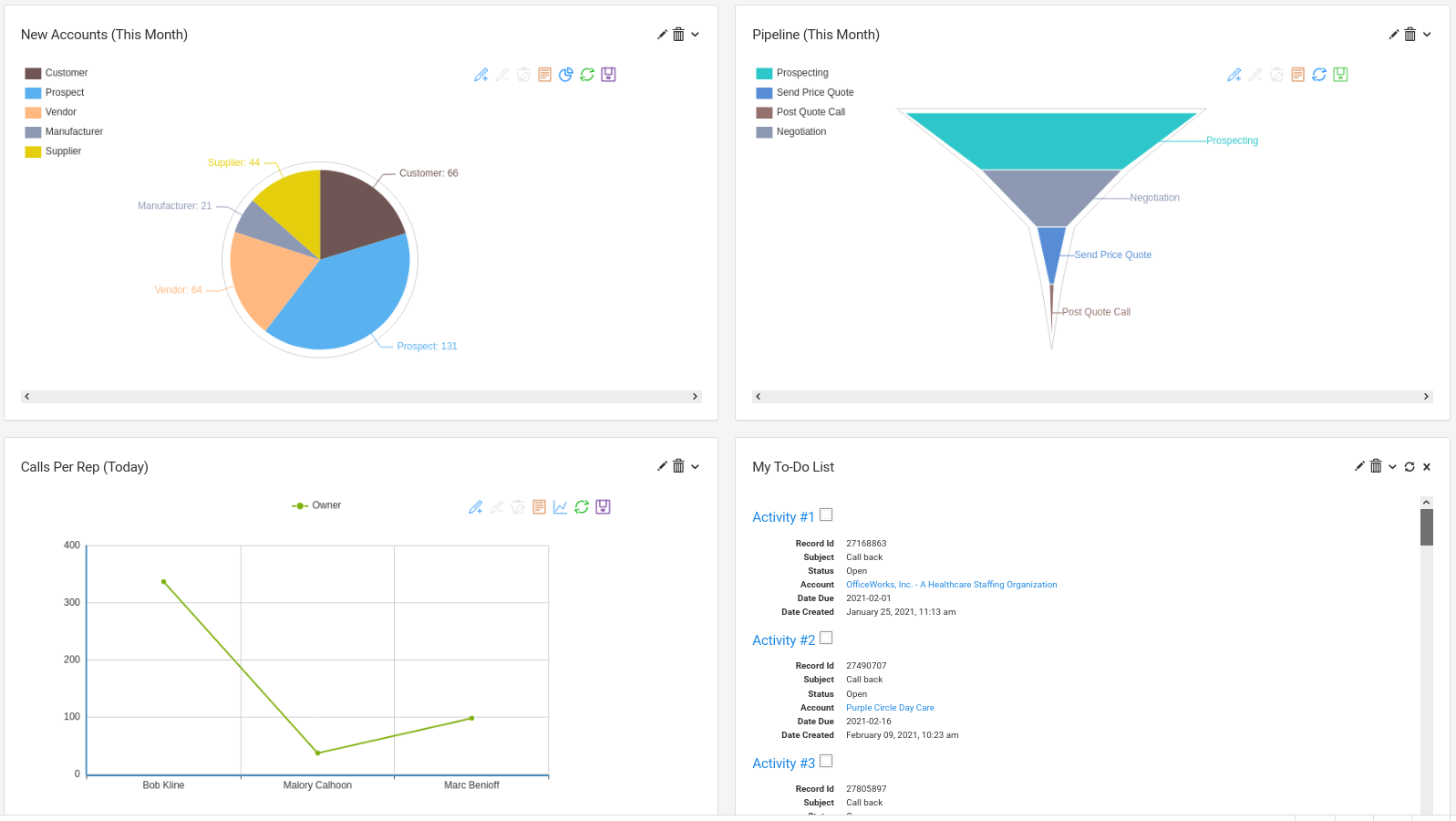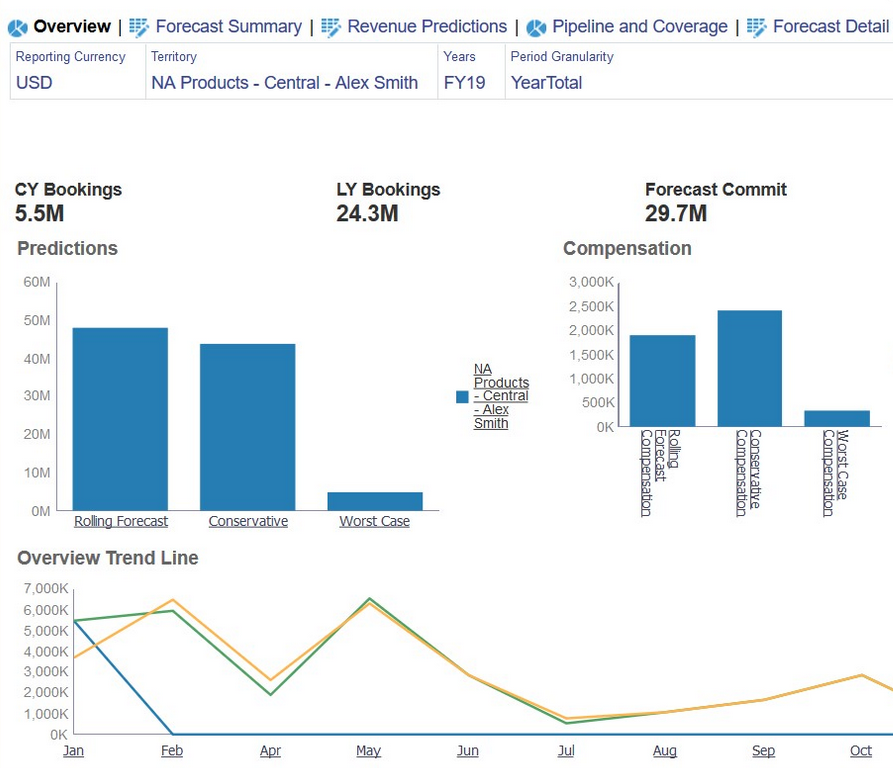Can you see the real-time sales data of your sales team whenever you want? If the answer is no, or you're thinking about it, then this article is for you.
CRM stands for Customer Relationship Management, and a CRM system is a software to manage your customer relationships and sales activities. If your organization is not using a CRM, you should start by reading the What is CRM article to get caught up. If you are using a CRM and are unhappy with the level of visibility you have into your sales data, this article will help you correct that.
How to Correctly Manage Your Sales Data
Well organized sales departments use a CRM system to manage their data. They use three features of the CRM to do this, Dashboards, Reports, and Sales Forecasting. I will touch on each of these and different ways to correctly utilize them to maximize visibility into your sales team's performance.
Reports

Running reports are a wonderful benefit of having a CRM software. Having the luxury to quickly and easily run reports whenever you feel like it is a major milestone in the sales industry. For example only a decade ago most sales managers would need to request a specific report from their database administrator, and 6 hours later would hopefully have the report delivered to them. Those days are thankfully behind us.
All CRM systems have a Reports module, this is where you go to build new reports, or access existing reports you saved for later use.
In Snapforce CRM, you can create folders to save your reports to, this helps for organization. For example you may choose to create a folder for each sales person, so you can create save each of their performance reports to their specific folder.
Some good reports that all sales managers should have saved and ready to pull at a moments notice are listed below.
- Deals Expected to Close This Month
- Closed Won Deals By Sales Rep This Month
- Deals With 80% Probability of Closing Next 30 Days
- Top Five Sales Reps By Revenue Last 30 Days
- Worst Five Sales Reps By Revenue Last 30 Days
- Closed Won Deals By Rep Month Over Month
These are the types of reports you should create and save with your CRM. Remember these are only examples of the types of reports you can easily create with any CRM system. The types of reports your organization needs may differ and that is fine.
Reports are text based representations of the data you are asking to see. After creating and saving a report you find useful you can then turn it into a chart or graph and drop it onto your dashboard.
Dashboards

In your CRM system, Dashboards are a page dedicated to showing you a bird's eye view of your company data. Dashboards show you a collection of your reports in a visual way, usually by way of charts and graphs. Each report is dropped onto a Dashlet. Dashboards can have up to 12 individual dashlets i.e. reports.
It may be a good idea to create multiple dashboards for your sales data. Many organizations create a Sales Manager Dashboard, Sales Rep Dashboard, Sales Leaderboard Dashboard, and others. Depending on your organization you can even create a dashboard for each individual sales person.
The Sales Manager Dashboard shows you the reports that include all of your sales rep data. For example the reports I listed above would be great to put onto your Sales Manager Dashboard.
The Sales Rep Dashboard would be meant for your individual sales reps. When a sales person logs into the CRM, they would normally land on the Sales Rep Dashboard. It would show them an overview of all of their performance; how many calls they've made for the day thus far, how many closed won deals they have for the month so far, it can even include a to-do list that shows them any tasks that they have due for the day.
Sales Forecasting

Once your sales team begins to use the CRM system, all bets are off. You can run reports, build dashboards, and even forecast your future sales.
Forecasting is a huge part to any successful sales department, it is also an important part of any sales manager's job.
Having a solid idea of how much new business the company is expected to close in the coming month, quarter or year is vital when planning your marketing and sales activities. It is also a good way to know which sales people should be replaced. For example why wait until the end of the month to see if a sales person is going to meet their quota when you can see the future?
Sales Forecasting let's you anticipate the future sales of your company and your individual sales people. The CRM system can do this because each deal or opportunity has an expected close date field, and a probability field that your sales person is required to fill out. These two pieces of data allow you to forecast their upcoming sales, or lack thereof.
Conclusion
Managing your company sales data does not need to be difficult, especially if your sales team is already using a CRM. The system will do the work for you, all you need to do is spend a small amount of time upfront configuring your system with the reports you need to see. After you do this, it is just a matter of logging into the CRM from your computer or phone, and you can check your company sales data in real-time from anywhere.

